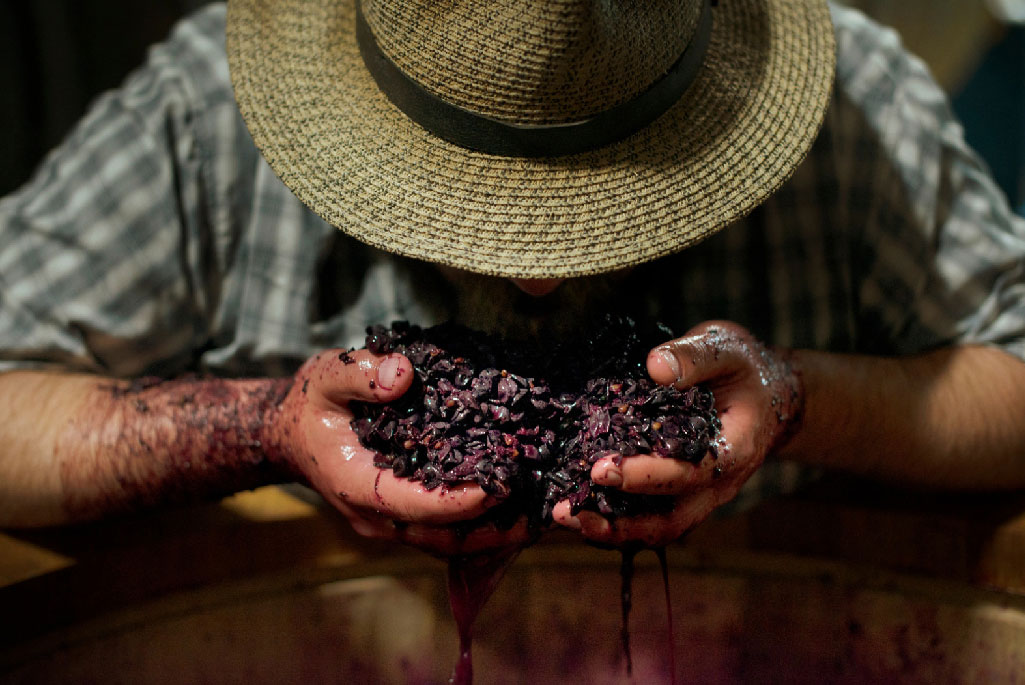By buying Bedrock wine you are helping us push the conversation forward regarding how well-managed agriculture can improve the world we live in while providing a soulful and history-filled libation.
“What's inspiring about farming is when you start to think about terroir as a system where the plant is communicating with the soil. If you want to express terroir, you want the plant to be communicating with its soil instead of relying on external inputs, which the goal of everything we are doing.” - Jake Neustadt, Director of Viticulture
Fundamental to rehabilitating ancient vineyards is thoughtful farming. At Bedrock we utilize some of the most progressive farming in the industry to repair denuded soils and rebuild broken biological systems. Our core vineyard, Bedrock Vineyard is certified both Organic and Regenerative Organic and we farm our outside vineyards using the same core ethos. What does this mean?


We focus on holistic and agroecological principles to build diversity, minimize soil disturbance, integrate animals and regenerate our landscapes. In the process we greatly improve water capture and carbon sequestration, making our vineyards more resilient to the extremities of weather experienced in this era. We believe that properly enacted agriculture can be of great service to the entire ecosystem around us- from humans to earthworms to fungi- and we relish the journey as we continually work to perfect our vineyard practices.
In doing so we look to certain core principles.
Diversity
Because grapes are a perennial cropping system it is critical to increase biodiversity of all types around the vines. We grow diverse cover crops of over 20 different plant species from 7-8 plant families during the Winter and Spring and utilize thousands of native plants in insectary rows and pollinator pathways throughout the year. We provide habitat for birds and beneficial insects via these crops along with owl boxes and raptor roosts throughout our vineyards. Because of this our vineyards are literally loud- filled with buzzing insects and birdsong.
Soil biology has to be fed, and it has to be fed like any living thing with carbon. So the main food source for the microbiome is plant root exudates, which are sugars that plants excrete from their roots. And all plants do this. It's kind of amazing. A healthy plant will exude 50% or more of its photosynthates into the soil microbiome in exchange for nutrients and this relationship is the core of life on earth.” -Jake Neustadt, Director of Viticulture


Minimal Disturbance of Soil
Core to our practices is protecting soil microbiology and holding carbon in our soils via non-till practices. Increased carbon means increase water capture and water holding capacity which is critical in a state where water is scarce.
Protect the Soil
Via the use of crimping, we protect the soil from direct sunlight, protecting soil biology and also cooling the overall mesoclimate of the vineyard—something that gives us resilience in the face of extreme heat events.
“Soil wants to heal itself. Nature is always going to want to. It's just understanding how to let it while still farming” -Jake Neustadt, Director of Viticulture
Animal Integration
We use season adapted grazing to replicate the way ruminant animals move across the land in nature. We intensely graze with a large number of animals for a short period of time and then allow cover crops to regrow prior to crimping. We have seen a 4x increase in soil microbiology and a large jump in carbon sequestration by re-integrating animals into our cropping systems.
Context
There is no prescribed way to farm as each situation is different. What is possible on the volcanic soils of Sonoma Valley where we got 35 inches of rain a year is different than what we can do at Evangelho Vineyard planted in deep sands that gets 10” of annual rain. The importance is that we focus on the best, most beneficial practices, for that site.


Fun Farming Facts:
A 1% increase in soil organic matter can increase soil water holding capacity by 20,000+ gallons of water per acre. With our farming practices we have increased soil organic matter from less than 1% to over 5% which has improved our water holding capacity by over 80,000 gallons per acre. In a drought prone environment this is important.
This increase also means we are storing 32 more tons of carbon per acre in the soil.
Non-till systems can absorb 10” of rain per hour compared to .5” in tilled systems. By not tilling we can capture rainfall when it comes and allow it to percolate through the soil profile rather than it running off and causing erosion.
Our regenerative system requires far fewer inputs which means we do not use energy intensive conventional fertilizers or compost made offsite that needs to be trucked in.

